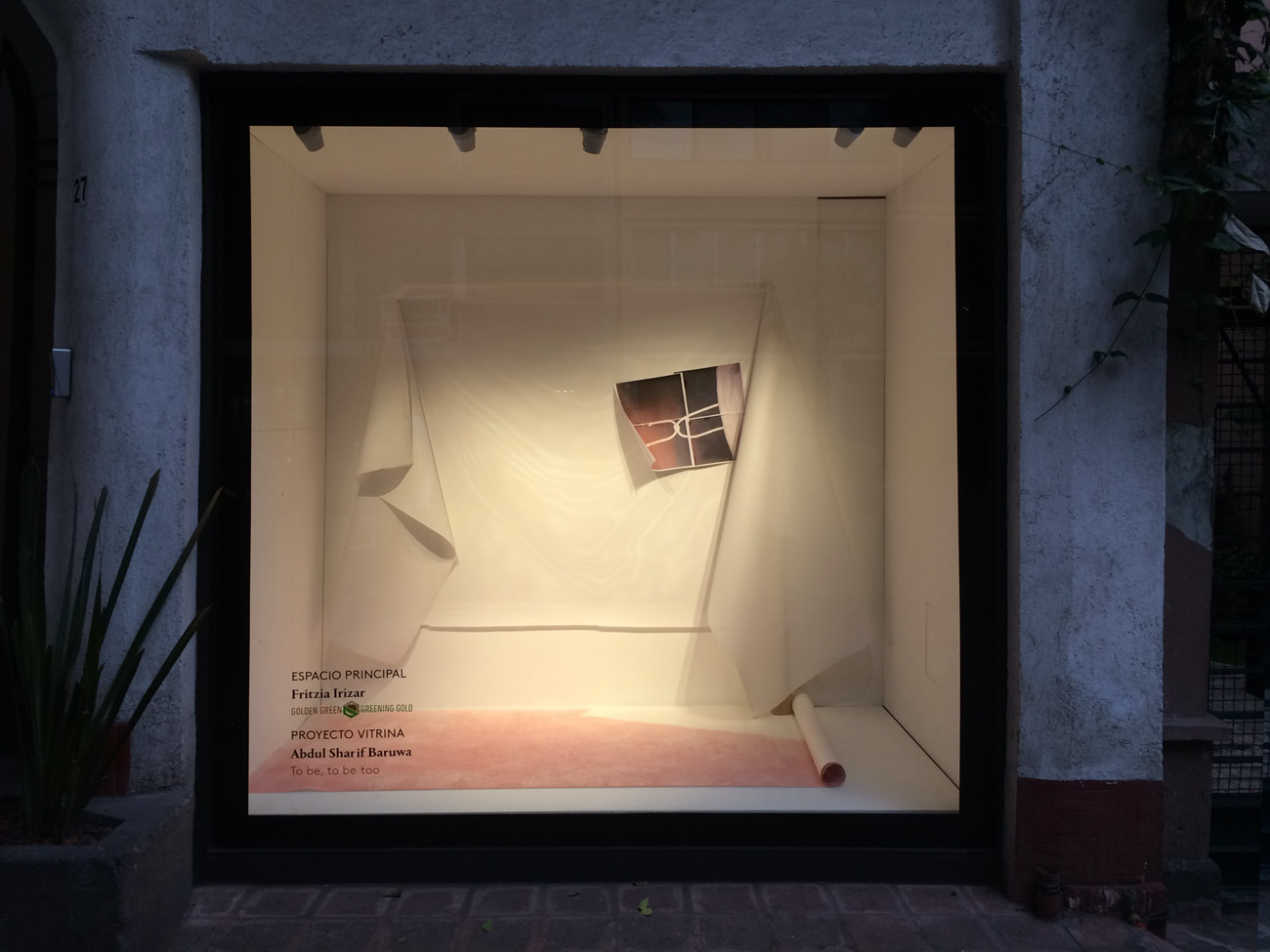Proyecto Vitrina
To be to be too
Abdul Sharif Baruwa

The old man puts his fists down on the concrete next to his hips and leans forward pushing against the concrete to slowly lean into standing up. Once he stands, it looks like he takes a moment to absorb his new state. With three steps he turns 180 degrees facing the knee high concrete landing he was just sitting on. Slowly he straightens up all sides of the tote bag to be able to reach inside without being caught by the handles. He takes out a perfectly folded white singlet, unfolds it and pulls it over his head like a tube until his head comes out the other side. Slowly he orchestrates his arms through the designated gaps making sure that each movement is not interrupted and can be smoothly processed from start to finish. He proceeds like this with every piece of clothing, wrapping a towel around his hips neatly before changing from swim shorts into boxer briefs. His feet glide, like in slow motion, into his socks, held by only one hand. Each sock folded down twice by 2,5 cm. He sits down and places his feet carefully next to each other to verify if his socks are at the exact same height, correcting the millimeter with a swift touch.
Observing this great amount of dedication and precision in banal everyday tasks was fascinating to me. It reminded me of the Furoshiki packages made during hypnotizing rituals in the films of Ozu Yasujirō. Or calligraphy often associated with sword fighting. Each brush stroke in Japanese calligraphy must be perfectly executed since the artist never goes back to touch up any character. Each movement of the sword or brush is ideally performed with the full force of one's mind and body, as if one's very life depended upon the successful completion of each action.
One could argue, that Abdul Sharif Baruwa makes art in such manner. His works consist mainly of material observation/experiment and documented, thought through gestures, often deriving from every day operations. Sharif himself once compared his gestures to sword strikes. As part of his practice, he collects the remains of work processes also by other artists and uses them like a DJ uses samples, or as quotes of past moments in time. His installation "to be to be too" combines all these different aspects of his artistic practice. The installation is custom sized for the vitrine of Arredondo \ Arozarena and consists of four autonomous entities: gesture, support, packaging and sample. Four levels of meaning colliding into one complex and simple looking work of art which in the process of reflection received a very different title than the originally intended one: "An Old Samurai's thoughts about Giacometti On A Lazy Sunday Morning"
Sharif tied a knot in his sweat pants without functional purpose and took a picture of its phallic form. In the printing process the colors got distorted by an empty cartridge and chance became part of the final aesthetic. Sharif made sure to maintain the white boarders resulting from the print range of the printer in order to distinguish the original gesture from its translation into another medium. The image is printed on four A4 sheets taped together and taped onto the support: a PVC foil still partly wrapped around the cardboard roll, its core support for transport.
The roll also serves as stopper in order to keep the floor paper from rolling back into transport form. The floor paper is one of those samples of a different process in a distant moment. It was used as floor protection and shows the spray paint dust and imprint of a sheet lying on top of it. It also serves as part of an answer to one of Abdul Sharif Baruwa's main inquiries: How to paint without actually painting? The over all installation is much like a tool box of artistic reflection and expression, each element opening various doors to various concerns of contemporary art and the secrets to the artist's practice.
Victoria Dejaco, Gornja Radgona 2016
PROYECTO VITRINA works as a showcase of collaborative projects between diverse artists and Arredondo \ Arozarena gallery. It is on view at Praga Street in Colonia Juarez, Mexico City.